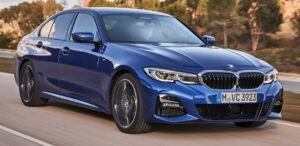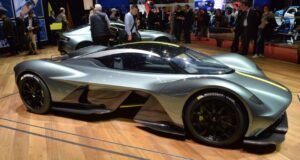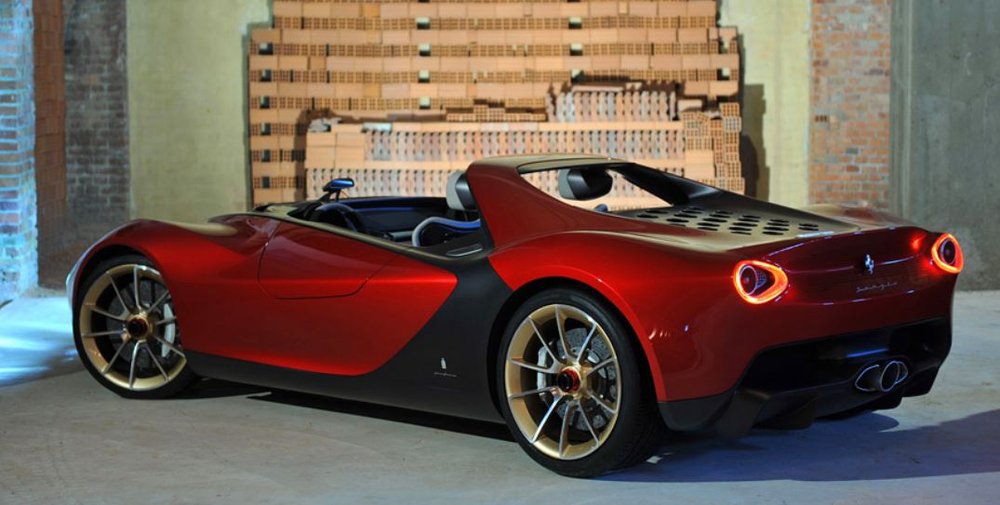Overview of High-End Vehicles
The height of automotive engineering, luxury automobiles combine exquisite design, cutting-edge technology, and excellent workmanship. Modern entertainment systems, quality materials, and strong, yet sophisticated, performance are just a few of the high-end characteristics that set these cars apart from ordinary ones. Some characteristics that distinguish a luxury automobile are leather interiors, customizable choices, and a level of precision only seen in bespoke production procedures.
Above and beyond their outward characteristics, luxury automobiles are very important in society and culture. Many times, driving a luxury car is seen as a status symbol for wealth and success. These vehicles, which represent the owners’ affluence and tasteful preferences, are often linked to better social standing. Beyond simple transportation, luxury automobiles are viewed as extensions of a person’s personality and personal brand, expressing an elegant and exclusive way of life.
Luxury automobiles are distinguished also by their performance features. Designed for maximum power and smoothness, these cars frequently include sophisticated drivetrains, better handling, and more safety equipment. Many high-end vehicles provide a calm driving experience by fusing comfort with stability. Luxury carmakers are showing a dedication to both performance and environmental responsibility with the rising number of hybrid and electric powertrain innovations.
Luxury automobiles are, in short, the perfect combination of unmatched comfort, technical innovation, and visual appeal. They are more than just means of getting around; they are status symbols that provide an extraordinary experience. Luxury automobiles are the height of automotive perfection and a sought-after possession for many people worldwide because of their special combination of qualities.
Overview of Luxury Automobile History
With the invention of the vehicle itself in the late 19th century, the voyage of luxury automobiles started. Attractive only to the wealthy, early luxury automobiles represented luxury. Companies like Rolls-Royce, which was launched in 1904, became leaders in this market very quickly and established benchmarks for performance and elegance.
Other well-known companies like Cadillac and Mercedes-Benz emerged in the early 1900s, bringing with them firsts like the V8 engine and the crumple zone. These turning points improved driving enjoyment in addition to performance, resulting in luxury automobiles that combine the best comfort with state-of-the-art technology.
The luxury automobile market kept changing throughout the years, molded by changing customer tastes as well as technical breakthroughs. Modern amenities like air conditioning, electric windows, and automatic transmissions were introduced in the years following World War II. Previously thought of as ostentatious, these characteristics became typical in luxury automobiles, setting them apart from mass-market vehicles even more.
The invention of electronic technologies like traction control and anti-lock brakes throughout the 1980s and 1990s signaled a major period of innovation. Key players with cars that offered performance, dependability, and elegance were BMW and Lexus. A change toward more ecologically friendly designs also occurred at this time, as producers started using fuel-efficient technology without sacrificing elegance.
Digital technology has completely changed the luxury automobile industry in the twenty-first century. These days’ wonders include hybrid or entirely electric engines, sophisticated driver-assistance systems, and AI-powered features. While established companies keep innovating and providing personal customisation choices and unmatched workmanship, companies like Tesla have redefined luxury by fusing cutting-edge technology with sustainability.
Luxury automobile development is evidence of the industry’s capacity to change with the times and prosper. From the handmade beauty of the early 1900s to the tech-savvy, environmentally friendly vehicles of today, luxury automobiles continue to push the limits of what is feasible.
Leading Luxury Automakers
In the automobile business, a few companies always take the lead when talking about the height of luxury and riches. Of these, many consider Rolls-Royce, Bentley, Mercedes-Benz, BMW, and Aston Martin to be the height of luxury and technical brilliance.
For unmatched elegance, exact engineering, and custom design, think Rolls-Royce. Since its founding in 1906, the company has earned a reputation for producing the most beautiful automobiles—often dubbed “the best cars in the world.” Its flagship models, the Phantom and the Ghost, are renowned for their exquisite workmanship, stately appearance, and hushed interior spaces. The Starlight Headliner and the Spirit of Ecstasy hood ornament, which embody the brand’s dedication to luxury and uniqueness, are two of its unique selling factors.
Bentley offers strong performance along with British grace. Bentley, which was founded in 1919, has a long tradition of building opulent, fast grand tours. Top models that demonstrate the company’s commitment to opulent interiors and cutting-edge technology include the Continental GT and the Flying Spur. Bentley’s distinctive handmade wood veneers and the Mulliner customizing program enable owners to customize their cars to an amazing extent.
Founded in 1926, Mercedes-Benz is well known for fusing performance, innovation, and elegance. Modern technology, exceptional comfort, and sophisticated safety features make the S-Class sedan the standard for premium cars. Mercedes-Benz is renowned for its AMG series, which gives its high-end vehicles exceptional performance. The company’s attempts at electrification and the development of autonomous driving technology demonstrate its dedication to innovation.
BMW, which has been making “the ultimate driving machines” since 1916, is best known for its 7 Series and 8 Series, which combine cutting-edge technology, stylish design, and dynamic performance. The sophisticated driver assistance technologies integrated into BMW’s iDrive system distinguish it in the cutthroat premium automobile industry. Sporty handling and driving enjoyment are still major draws for fans of premium cars.
Founded in 1913, Aston Martin is renowned for both its classic style and connection to James Bond. Aston Martin is committed to beauty, power, and exclusivity, as seen by models like the DB11 and the Vantage. The front grille of the brand is notable, as are the opulent interiors made of the best materials. Because Aston Martin places such a strong focus on customised design, every car is a special representation of the owner’s sense of taste and flair.
In the automobile industry, each of these esteemed brands represents the height of luxury and prosperity with its own combination of history, skill, and invention. Both vehicle lovers and collectors are enthralled by their dedication to quality and capacity to arouse a feeling of exclusivity.
Rolls-Royce, The Ultimate in Luxury
Regarding premium cars, Rolls-Royce is an unmatched symbol of elegance and extravagance. The brand’s reputation as the height of automotive beauty has been established by its steadfast dedication to workmanship, customized choices, and painstaking attention to detail. Every Rolls-Royce automobile is a monument to the craftsmanship and accuracy that characterize the brand, guaranteeing that every vehicle bearing the nameplate is more than just a means of mobility but a mobile work of art
The Phantom is among the Rolls-Royce lineup’s most recognizable models. Well-known for its imposing appearance and exceptional luxury, the Phantom provides unmatched driving pleasure. Hand-stitched leather, beautiful wood veneers, and custom features made to the owner’s requirements make the Phantom’s interior a haven of luxury. Modern technology blends in well with traditional elegance to offer amenities like the starlight headliner, which uses thousands of fiber-optic lights to mimic the night sky.
Rolls-Royce’s commitment to luxury is further demonstrated with the Cullinan, the company’s first SUV. The Cullinan, so named after the biggest diamond ever found, combines elegant refinement with tough performance. Premium materials, such as lambswool floor mats and a panoramic glass top that lets in an abundance of natural light, decorate its roomy interior. The Cullinan provides a smooth and calm ride across any terrain, and its off-road ability is matched by its on-road tranquilly.
Every Rolls-Royce is commissioned rather than just bought, and each one reflects the individual preferences and aspirations of its owner. Every Rolls-Royce is a unique embodiment of luxury thanks to the practically infinite customisation possibilities made possible by the customized programme, which range from bespoke paint colours to personalised embroidery. In the automobile industry, Rolls-Royce is the unquestionable emblem of wealth and grandeur because of this customized approach as well as the brand’s long history and dedication to quality.
Automotive Technology Advancements
The initial platforms for new developments before they are more widely adopted in mainstream models are usually luxury automobiles. Advanced driver-assistance systems (ADAS) are one of the most important areas of luxury car development. These advanced technologies offer a number of capabilities like autonomous parking, lane-keeping assistance, and adaptive cruise control. ADAS guarantees a more pleasant and stress-free driving experience in addition to improving safety by combining sensors, cameras, and radar.
Modern entertainment systems are yet another feature of premium vehicles. Often, these systems have voice command capabilities, smooth smartphone integration, and high-resolution touchscreens. Luxury automobile appeal is further enhanced by premium audio systems, which are frequently specially designed by well-known companies like Bang & Olufsen or Bose. Adding heads-up displays (HUDs) and augmented reality (AR) displays also makes driving more engaging and participatory.
The better safety systems built into premium cars are evidence that safety is a top priority for the manufacturers. Luxury car features like night vision, 360-degree video systems, and sophisticated collision avoidance systems are starting to become commonplace. Along with offering piece of mind, these technologies raise the bar for car safety regulations.
With their hybrid and electric powertrains, premium automobiles are spearheading the eco-friendly technological push. Leading manufacturers of high-performance electric cars (EVs) without sacrificing power or luxury include Tesla, BMW, and Porsche. The ecologically aware wealthy customer will find these eco-friendly models appealing because of their long ranges, quick acceleration, and little environmental effect.
All things considered, luxury automobile technical advancements greatly improve driving pleasure and provide unmatched convenience, security, and entertainment. These developments not only make high-end vehicles status and money symbols, but they also mark the future course of the automobile industry.
Personalization and Customization
Customization and individuality are key elements that distinguish premium cars from other models. Customers of luxury cars have the rare chance to customize their cars to suit certain interests and preferences, thus, each automobile is a distinct representation of its owner. Customized monograms and bespoke interiors are only two examples of the many aspects where this bespoke approach is applied. Other features include special paint jobs and materials.
Many times, luxury automakers have specialized departments that collaborate directly with customers to realize their ideas. Expert designers and craftspeople staff these divisions, assisting clients at every stage of the customizing process. picking rare wood veneers, picking the best leather for the upholstery, or creating a custom paint color—the customized team makes sure that every little detail reflects the client’s preferences.
Customization choices are essentially endless. Clients have the option of hand-stitched leather seats, bespoke embroidery, and even bespoke monograms on different sections of the car. Carbon fiber, precious metals, and exotic woods are just a few of the elements that may be used into the design of the automobile for people who like exclusivity. Modern entertainment systems, customized ambient lighting, and custom sound systems that improve the driving experience are also made possible by sophisticated technology.
A further way that owners of premium cars may show their uniqueness is in the paint jobs. Custom-mixed colors to metallic and iridescent hues—the options are limitless. To guarantee a genuinely distinctive exterior, some manufacturers even provide the choice to match the paint of the automobile to whatever color the customer chooses.
This extensive degree of personalization raises the car’s emotional worth to the owner in addition to its visual attractiveness. Luxury automobile makers develop cars that are status and identity symbols as well as means of mobility by fusing cutting-edge workmanship with the individuality of the customer. With these customized services, luxury cars really become the pinnacle of riches and luxury, catered to the particular preferences of their discriminating owners.
Used Luxury Car Market
The market for used luxury automobiles has been expanding consistently and provides a tempting substitute for buying a brand-new high-end car. Choosing a used luxury automobile offers several advantages, chief among them being substantial financial savings. New high-end vehicles depreciate quickly; in the first few years, they frequently lose a significant amount of value. Buyers may save themselves this first depreciation blow and get a top-notch car for a small portion of the original cost by buying a used model.
Potential purchasers should be conscious of the possible disadvantages of used luxury vehicles, though. With their sophisticated technology and high-end materials, maintenance and repair expenses for luxury cars may be higher than for non-luxury cars. It is imperative that purchasers factor in these fees and the long-term ownership costs.
On the plus side, a lot of manufacturers have programs called certified pre-owned (CPO), which give further piece of mind. Usually, these packages include comprehensive inspections, longer warranties, and other advantages that help to reduce some of the risks involved in purchasing a used automobile. Frequently in great shape, CPO cars have been painstakingly maintained and refurbished to the highest standards set by the manufacturer.
One other crucial thing to think about is availability. There are several models and setups available in the varied pre-owned luxury automobile market. Whether they’re searching for a fast coupe, a roomy SUV, or a chic sedan, buyers may discover cars that fit their needs and tastes. Because of this diversity, consumers may enjoy the performance and luxury associated with high-end vehicles without having to pay the exorbitant price of a new model.
All things considered, the used luxury automobile market offers a reasonable choice for people who want the comfort and status of a luxury car but are limited by their budget. Buyers may make educated judgments and take advantage of the finest that the luxury automobile industry has to offer by carefully weighing aspects like depreciation, maintenance expenses, and the advantages of certified pre-owned programs.
The Future of Luxury Automobiles: A Conclusion
When luxury and wealth are examined in the car industry, a complex picture emerges where cutting-edge technology and traditional workmanship coexist. Luxury automobiles are, as was already mentioned, expressions of personal identity, engineering wonders, and status symbols in addition to being means of mobility. Long defining what it means to buy a very “rich” automobile, brands like Rolls-Royce, Bentley, and Mercedes-Benz have embodied this combination of luxury and performance.
Looking ahead, a number of revolutionary developments are going to influence the future of luxury automobiles. The biggest advance may be the emergence of electric cars (EVs). Luxury automobile makers are spending more and more on electric and hybrid technology as regulatory demands and environmental concerns grow. Model S from Tesla and Taycan from Porsche are prime examples of how luxury and sustainability can coexist; they both provide zero-emission driving without sacrificing comfort or performance.
Another area that promises to completely reimagine luxury is autonomous driving technologies. convenience of self-driving capabilities fits in nicely with the luxury market’s focus on ease and comfort. Advanced driver-assistance technologies are already being included into premium models by manufacturers like Audi and BMW, which will soon allow for completely driverless luxury cars.
Beyond electric drivetrains, sustainability exists elsewhere. Sustainable manufacturing methods and the use of environmentally friendly materials are fast becoming essential components in the construction of luxury cars. As a larger trend toward responsible luxury takes hold, leather substitutes, recyclable materials, and ethical sourcing are becoming more popular. This dedication to sustainability appeals to customers who care about the environment as well as to the changing concept of luxury itself.
An automobile is essentially ‘rich’ because of its history, cutting-edge technology, and special experience. While the demands of consumers and technological progress may cause luxury automobiles to change, their fundamental attraction never goes out of style. Luxury automobiles will always have a unique position in the world of wealth and luxury because of the attraction of a well-built car, the excitement of outstanding performance, and the distinction of owning a work of automotive art.
